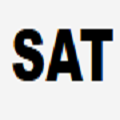Motivated by computing duplication patterns in sequences, a new fundamental problem called the longest subsequence-repeated subsequence (LSRS) is proposed. Given a sequence $S$ of length $n$, a letter-repeated subsequence is a subsequence of $S$ in the form of $x_1^{d_1}x_2^{d_2}\cdots x_k^{d_k}$ with $x_i$ a subsequence of $S$, $x_j\neq x_{j+1}$ and $d_i\geq 2$ for all $i$ in $[k]$ and $j$ in $[k-1]$. We first present an $O(n^6)$ time algorithm to compute the longest cubic subsequences of all the $O(n^2)$ substrings of $S$, improving the trivial $O(n^7)$ bound. Then, an $O(n^6)$ time algorithm for computing the longest subsequence-repeated subsequence (LSRS) of $S$ is obtained. Finally we focus on two variants of this problem. We first consider the constrained version when $\Sigma$ is unbounded, each letter appears in $S$ at most $d$ times and all the letters in $\Sigma$ must appear in the solution. We show that the problem is NP-hard for $d=4$, via a reduction from a special version of SAT (which is obtained from 3-COLORING). We then show that when each letter appears in $S$ at most $d=3$ times, then the problem is solvable in $O(n^5)$ time.
翻译:暂无翻译


